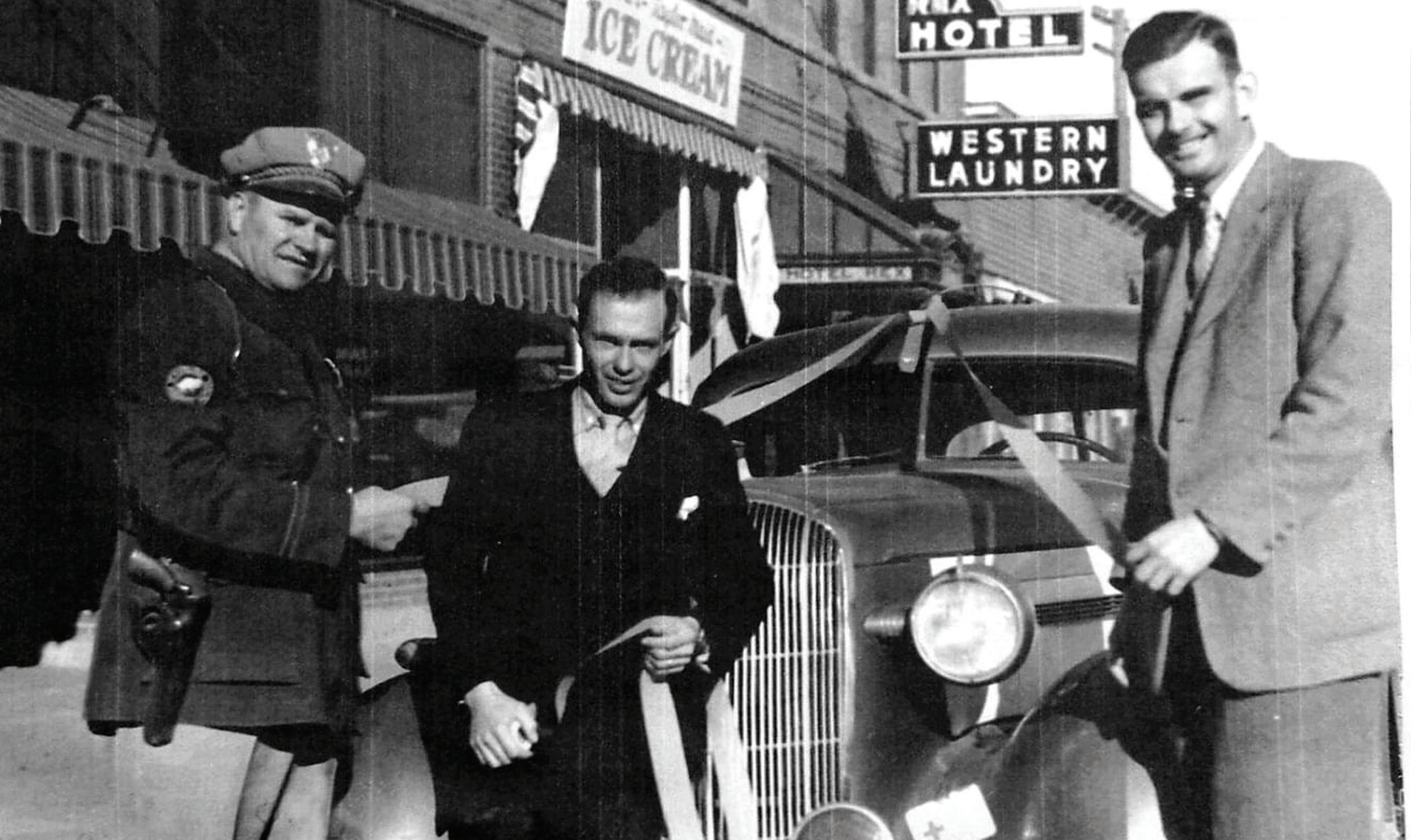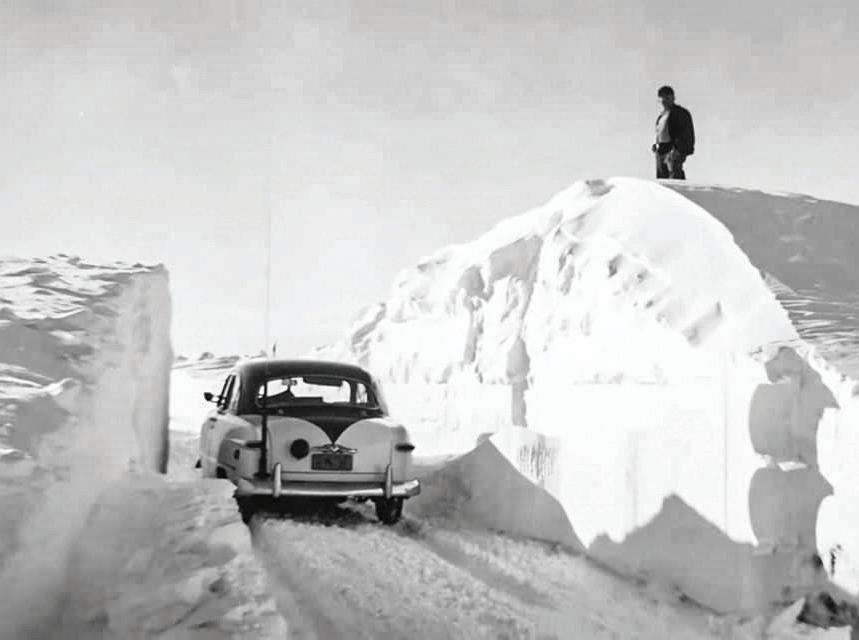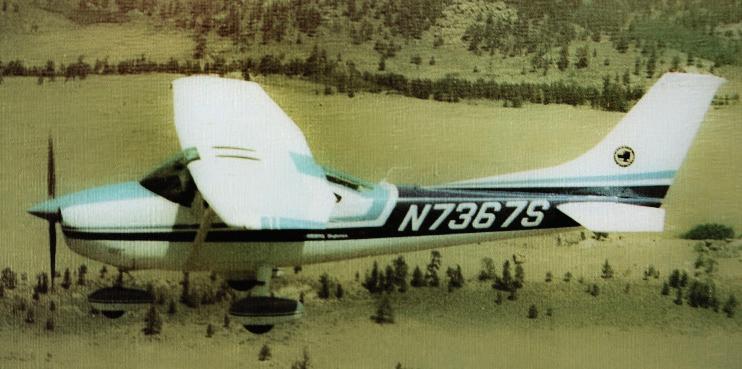
4 minute read
WHP celebrates 90 years serving Wyoming
by WYDOT
By Jordan Achs
This year marks the 90th anniversary of the Wyoming Highway Patrol, and the agency took some time this summer to celebrate how the WHP has grown and look ahead at the future.
Celebrations are taking place around the state this summer and feature free food and interesting historical artifacts from the Patrol, including old uniforms and cars. The events are also a chance to have fun and get to know one another, with inflatable bounce houses and other games and attractions with Troopers and other WHP staff who can talk about the WHP’s past, present and future.
The celebratory events were had in Cheyenne, Gillette and Casper in June, and more are planned this summer, including in Thermopolis and Rock Springs.
“The Patrol has had a rich history serving the residents, tourists and travelers in Wyoming,” said WHP Colonel Tim Cameron, “it only makes sense to celebrate this history with the people we serve.”
The Patrol was first proposed on June 1, 1933, by then Gov.
Leslie Miller after the Wyoming Department of Law Enforcement disbanded earlier that year. In 1935, the House passed a bill to officially form the Highway Patrol as we know it today.
The WHP has prioritized public safety since its inception, with Troopers receiving first aid training and supplies in their vehicles in 1936.
Some of the first anti-drunk driving and other safe-driving messaging started in 1934. The first Driving Under the Influence arrest by a Trooper was made in January 1934; unfortunately, it was by no means the last, as alcohol and drug related crashes continue to be a nationwide issue.
Despite highway safety campaigns aimed at preventing fatalities on the highways starting as early as 1936, the messaging still has to continue today, with 134 fatalities recorded in 2022. Of those, 86 fatalities were attributed to impaired driving with alcohol or drugs.
Fatalities reached as high as 264 in 1981, which is still considered the state’s record high. More than half of those fatalities were
Interchange is published for employees of the Wyoming Department of Transportation by its Public Affairs Office and a number of field correspondents.
Interchange invites submissions from all employees. Please send them to either your district correspondents or to Carlie Van Winkle, Interchange editor 5300 Bishop Blvd., Cheyenne, Wyoming, 82009-3340 or send an email to carlie.vanwinkle@wyo.gov.
Staff WYDOT Director, interim
Darin J. Westby, P.E.
Public Affairs Manager
Doug McGee
Editor
Carlie Van Winkle
Contributors
Jordan Achs Public Affairs
Matt Groth Public Affairs
Mark Horan Public Affairs
Carlie Van Winkle Public Affairs
Andrea Staley District 1
Jeff Goetz District 2
Stephanie Harsha District 3
Laura Dalles District 4
Cody Beers District 5
Sgt. Jeremy Beck Patrol alcohol related. This troubling statistic helped birth the Report Every Drunk Driver Immediately program to try to reduce alcohol-related fatalities on the highways. When the REDDI program celebrated its 20 year anniversary in 2002, it had seen 140,000 phone calls that lead to 13,000 drunk driving arrests.
Be sure to check out the online version of Interchange at http://issuu.com/ wydot.pao or click on the link found on the employee’s internal website home page.
Unfortunately, one of those fatalities in 1981 was one of WHP’s own. Patrolman Pete Visser was struck in his patrol car by a drunk driver, making him the first WHP patrolman to die in the line of duty.
Another trooper lost his life responding to a report of an intoxicated driver in 1998, when Trooper Chris Logsdon swerved and flipped his vehicle avoiding the wrongway vehicle on I-25 north of Wheatland.
Of course, working in the worst winter conditions is another reoccurring theme in the WHP timeline. The blizzard of 1949 rocked the state, and Troopers were reported to have worked shifts as long as 48-72 hours straight, although they didn’t log it that way formally. Blizzards in the 70s when Interstate 80 first opened, and even the most recent record-breaking winter the state just experienced, shows that going above and beyond in the winter has always been a proud part of the WHP’s operations.

Some traditions change and evolve, like the switch from using the term patrolmen to trooper. Another is the WHP uniform; the overall design has certainly changed since the 30s, and while the main color is a military green, troopers used to have tan shirts.
The original uniform was a military green because they were World War I military surplus uniforms provided to the WHP by the California Highway Patrol. Other notable firsts by the WHP include:
• The first Port of Entry – then called a vehicle check station –was placed in Cheyenne in 1948. However, the Commercial Motor Vehicle Carrier division wasn’t created until 1975.

• The first female WHP patrolman was Bonnie Coppock, who started in 1979. The next female patrolman, Sheila Moak, was hired in 1984.
• Jeff Baltimore, the first African American WHP patrolman, started in 1980.
• The first G. Clyde Larson Memorial awards, often called the Life Saver Award, was presented to patrolmen Bob Mathisen and Brent Taylor in 1969 for resuscitating a drowning victim. Since then, four more Troopers have received the award for their heroic efforts.
• The first patrolman wounded by gunfire at a traffic stop was Duane Verley in 1972, who was shot four times. The assailants were captured near Manville, and Verley returned to work after five months of recovery.
• In 1991, the WHP saw its first married couple, who both served as Patrolmen.
In 1990, Patrol introduced the first computer aided dispatch system. The WHP dispatch center relocated to a centralized location in the basement of the headquarters building in 1980, and then to an off-site location north of the WYDOT campus complex in 2008.











